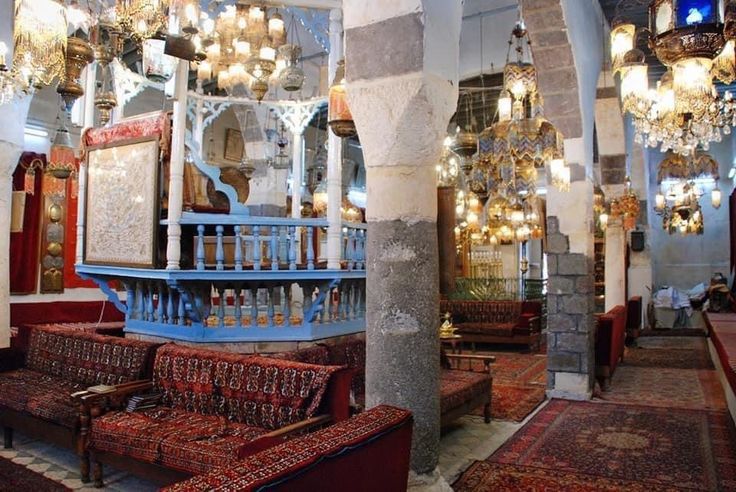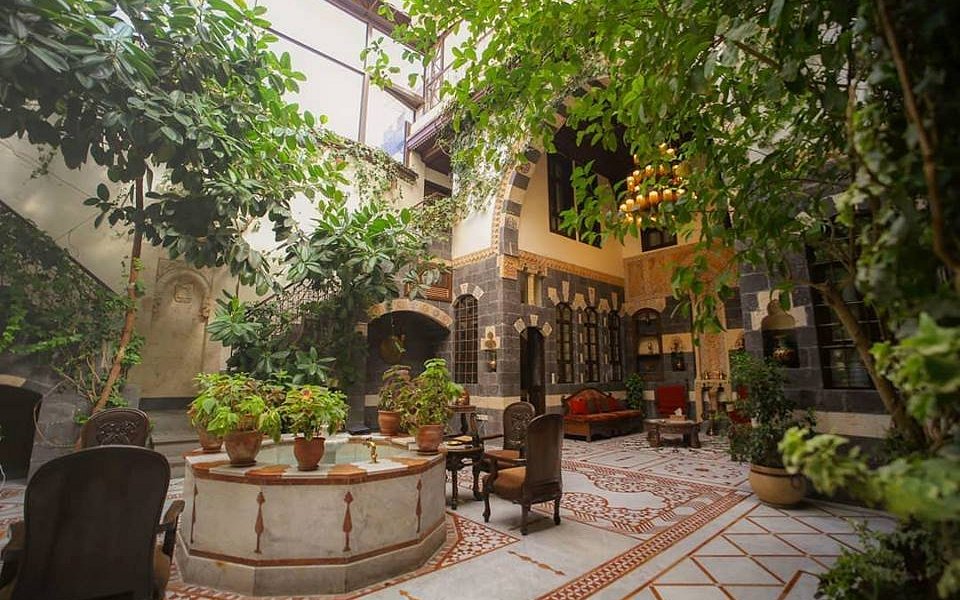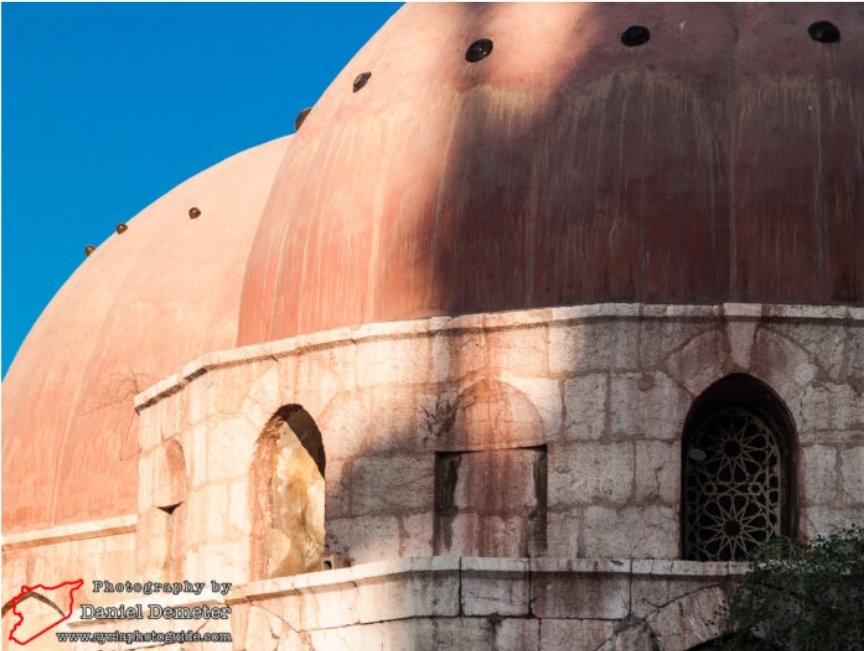The Sinaniyya Mosque, built in 999 AH/1590 AD, belongs to a generation of mid-Ottoman era buildings that introduced Qashani decoration to the urban fabric of Damascus. Built on the foundations of the older “Bassal Mosque,” it takes its name from the governor of Damascus, Muhammad Pasha ibn Sinan Pasha, and bears the signature of local architects inspired by the school of Mimar Sinan in Constantinople. The complex consists of a rectangular sanctuary covered by a smooth dome resting on an octagonal drum surrounded by latticework windows, and a small courtyard with an octagonal ablution basin in the middle. The eastern portico contains a muqarnas portal with a marble lintel, providing a visual transition from the bustling street to a tranquil space. The stone façade is distinguished by its black and white color, while the blue and green tiles around the windows shimmer, some of the oldest Iznik tiles to have reached Damascus. The mosque is famous for its tubular minaret with a circular plan, a rare occurrence in a city where square-shaped minarets are prevalent. The mosque has remained relatively well preserved.







